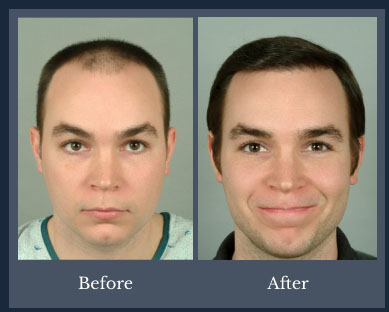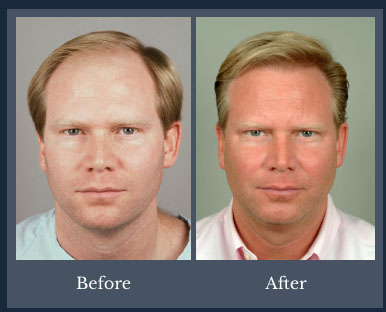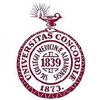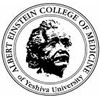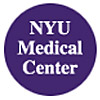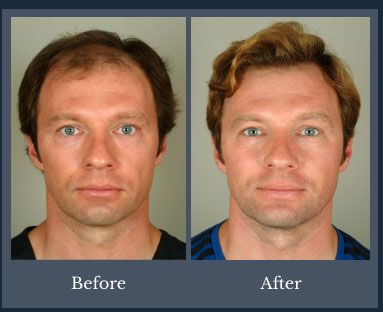Meet
Robert Haber, MD, FISHRS
Dr. Haber is considered one of the finest hair transplant surgeons in the world, and lectures internationally each year. He also directs the region’s busiest private clinical trials unit studying new medications.
In 2023, Dr. Haber was the recipient of the prestigious Manfred Lucas Lifetime Achievement Award by the ISHRS, for his exceptional contributions and commitment to the field of hair transplantation. Only 15 other surgeons globally have ever received this honor.
The International Society of Hair Restoration Surgery (ISHRS) awarded Dr. Haber the coveted Golden Follicle Award in 2009 as one of the world’s top hair transplant surgeons, in recognition of his academic contributions and surgical skills.
Dr. Haber has lectured about his surgical techniques nationally and internationally. Patients come from a variety of locations across the United States, as well as Europe and the Middle East.
If you’re concerned about your hair loss, you are not alone. Over 20 million men in the United States are balding, along with millions of women, and all but a few would like to restore a fuller head of hair.
For some people, the search for a cure unfortunately leads to a variety of worthless and sometimes damaging treatments and products. We can help you make the right decision!
Testimonials
“…Dr. Haber wouldn’t recommend a hair transplant until we spoke about non-surgical options first. Found out he literally WROTE the textbook about HAIR TRANSPLANTS. The surgery was a breeze and recovery was about a day. The staff was pleasant to be around…I would honestly recommend everyone go to him.”
“When I came to Doctor Haber, I wasn’t sure if there was even hope for the top of my head. I was almost completely bald and didn’t even know if it was possible. Fast forward a year later and I look 20 years younger. The staff was amazing, the procedure was clearly explained and my results were so much better than I was expecting…”
“I recently underwent a hair transplant using the FUT method, and I can confidently say it was a remarkable experience from start to finish…I experienced no pain the next day and no swelling at all. I genuinely wish I had chosen this doctor for my previous transplants. I highly recommend Dr. Haber to anyone considering a hair transplant. This has been my best experience by far!”
Hair Transplant Terminology
The type of graft we use is the follicular unit, which is a naturally occurring bundle of 1 to 4 hairs that emerge from the scalp together. Nature put them in this way, and we carefully dissect and plant these bundles as intact units, creating the most natural and undetectable hair growth possible. There are centers that still rely on minigrafts or large round plugs as part of their approach. Larger grafts can be successfully planted, but the growth they produce will be far more visible, and will require careful camouflage and hairstyling.
These are incisions as small as 0.5mm in size created in the recipient zone that receive the follicular unit micrografts. Using this type of recipient site permits planting grafts close together for maximal density, provides extremely fast healing, and permits the entire transplant process to be completed in the shortest amount of time.
Megasessions refer to sessions in which at least 2000 grafts are placed. They are not fundamentally different from smaller sessions, but require larger numbers of well trained, experienced surgical assistants to produce excellent results. Dr. Haber routinely performs megasessions using between 2000 and 3500 grafts with consistently high quality results, with his team of nine “world class” surgical assistants.
Due to the curvature of the hair follicle, even experienced surgeons using meticulous surgical technique will usually transect many of the follicles at the edge of the strip. Dr. Haber invented the Haber Spreader™ to decrease this transection problem. The device works by gently but firmly separating the strip along a natural cleavage plane after making only very shallow scoring incisions with a blade. The transection rate with this device is often zero, maximizing the graft yield from the strip. The device is particularly useful in patients with very curly hair or grey hair.
This is a technique in which a small strip along the edge of the donor wound is removed prior to closure, forcing hairs to grow through the donor scar, and rendering the scar far less visible, and sometimes almost invisible.
Procedure Summary
This is an exciting time for hair restoration surgery. Advances in equipment and technique now permit us to produce results impossible only a few years ago.
As these procedures have gained nationwide acceptance, the popularity of surgical hair restoration has grown remarkably, and it now ranks as one of the top cosmetic procedure performed on men.
The old reputation of hair transplantation included large, visible plugs, noticeable scarring of the donor area as well as the necessity for expensive and disfiguring scalp procedures.
This has been replaced by the knowledge that when performed properly, hair transplantation can be virtually undetectable during all activities, and can be completed in a reasonable amount of time for a reasonable cost.
While surgical hair transplantation is the only permanent solution to the problem of baldness, medical treatments for hair loss, including the oral drug Propecia® and Rogaine®, 5% Foam can often be incorporated into your hair restoration program.
We take pride in offering a highly personalized level of attention, and encourage you to compare the services and quality available at our center with those available elsewhere.
Schedule a complimentary consultation visit today to learn more about how state-of-the-art hair transplantation procedures can exceed your greatest expectations.

